Artificial intelligence has made huge strides in image enhancement capabilities. Powerful neural networks can now boost quality with photo-realistic clarity. In this updated guide, we’ll explore the 12 best AI image upscaler and how they compare.
1. Gigapixel AI (Topaz Labs):
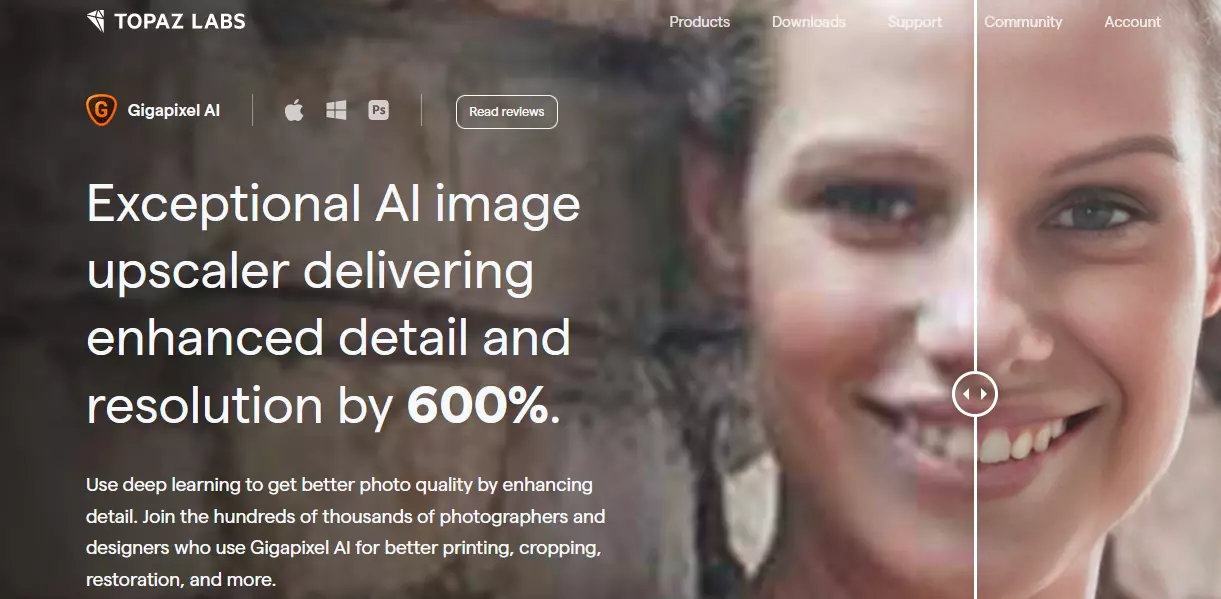
It is the leading upscaler that delivers the highest quality results. Intuitive desktop app optimizes workflows for photographers. Advanced controls include versatile presets tailored to content. The batch processes multiple files. Paid subscriptions provide support.
Key Features:
- Intuitive interface optimized for photographers
- Advanced controls for portraits, details, and scenes
- Custom presets tailored to content type
- Batch processing for multiple files at once
- Free trial with paid subscriptions available
Pros: Delivers the highest quality results, versatile preset options, and user-friendly workflow.
Cons: Most expensive compared to other tools.
2. VanceAI

This professional tool leverages powerful neural networks for flawless quality enhancements. Scales images up to 4x resolution while retaining fine details. Upload hundreds of files simultaneously for batch processing. Web app streamlines restoration projects.
Key Features:
- Leverages powerful neural networks for quality
- Upload hundreds of JPEGs and TIFs simultaneously
- Real-time previews and adjustable settings
- Scales up to 4x original resolution naturally
- Free low-res watermarked images
Pros: Excellent results even for complex images, and batch processing.
Cons: Watermarks on the free version limit output sizes.
3. Upscale.media

It utilizes a cutting-edge ESRGAN model to push resolutions up to an extreme 16x original size. The browser interface provides real-time previews. While best for experiments, delivers state-of-the-art sharpness even at the highest scales.
Key Features:
- Leverages ESRGAN model architecture
- Supports resolutions from 2x to 16x original
- Real-time scaling and natural result previews
- Web app works directly in the browser
Pros: State-of-the-art quality, customizable scaling.
Cons: No standalone version, some quality loss for extreme scales.
4. Icons8 Smart Upscaler
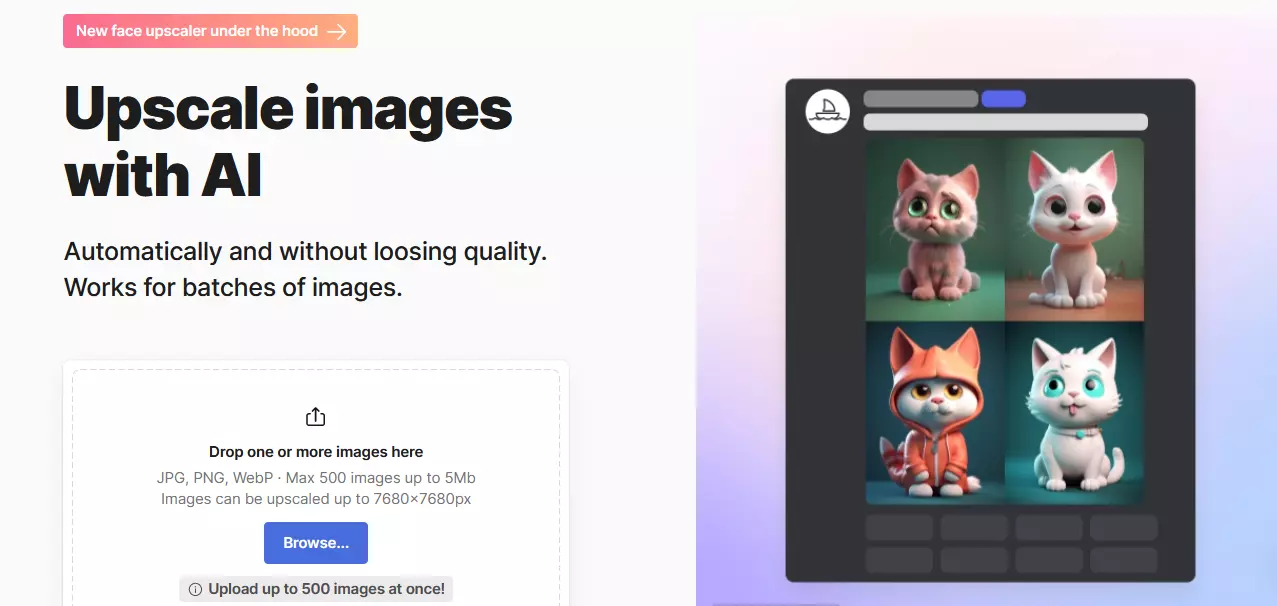
Trained specifically for natural image enhancements that preserve fine textures and edges. Browser-based with adjustable sharpness slider. Compatible with major file formats. A completely web-based interface provides easy access.
Key Features:
- Trained specifically for natural image enhancements
- Supports JPEGs, PNGs, and BMP formats
- Adjustable sharpness slider for fine-tuning results
- Completely browser-based, no downloads
Pros: Very easy-to-use interface, free version available.
Cons: Few customization options, watermark outputs.
5. HitPaw Photo Enhancer

The one-click solution automatically perfects photos within seconds for balanced lighting and colors. Works directly from device photos or Google Drive. Compatible with common formats. User-friendly for touch-ups but limits advanced editing and customization.
Key Features:
- Simple one-click photo enhancements
- Compatible with JPEGs, PNGs, and other formats
- Touch-up images automatically within seconds
- Works directly from device photos, Google Drive
Pros: Extremely user-friendly for basic touch-ups, and fast processing.
Cons: Limited customization, not for high-res professional editing.
6. Deep Image AI
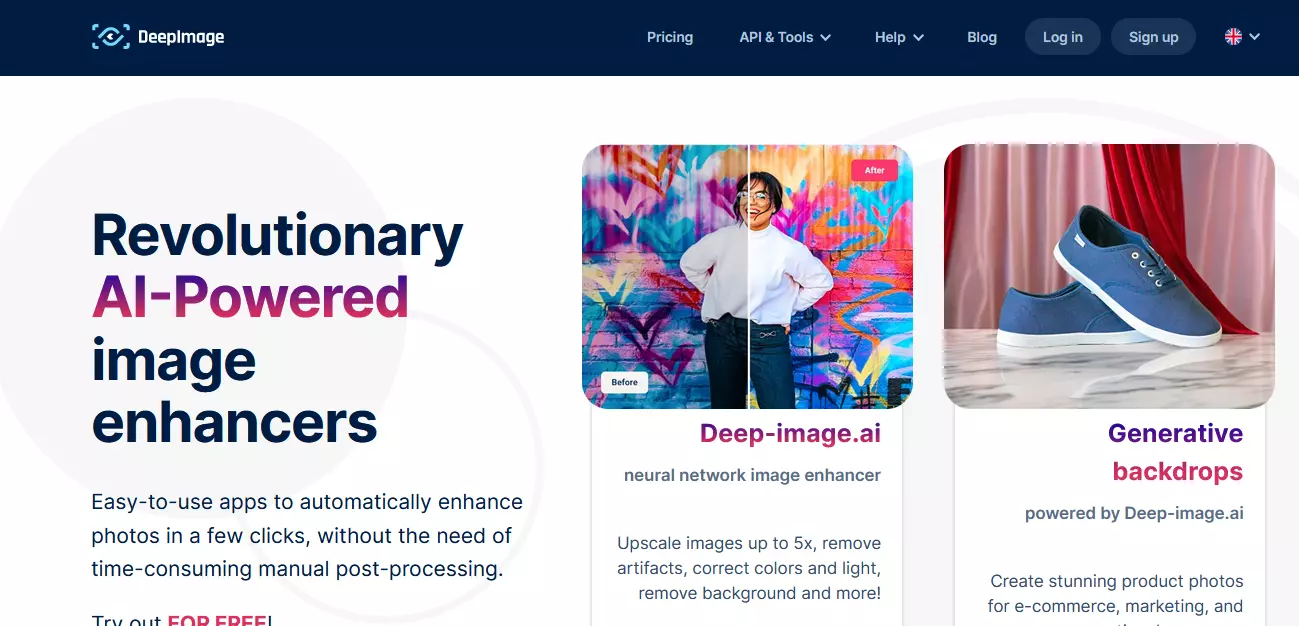
Leverages generative models like GANs for artistic stylization options during enhancements. Retains sharp details while applying manipulations. The free online application provides creative room. More limited than specialists for quality upscaling.
Key Features:
- Leverages GAN models and diffusion algorithms
- Creative options like tone mapping and colorizations
- Retains sharp details during manipulations
- Free browser-based application
Pros: Unique stylized results, easy online access.
Cons: More limited as a straight enhancement tool, watermarks outputs.
7. Waifu2x
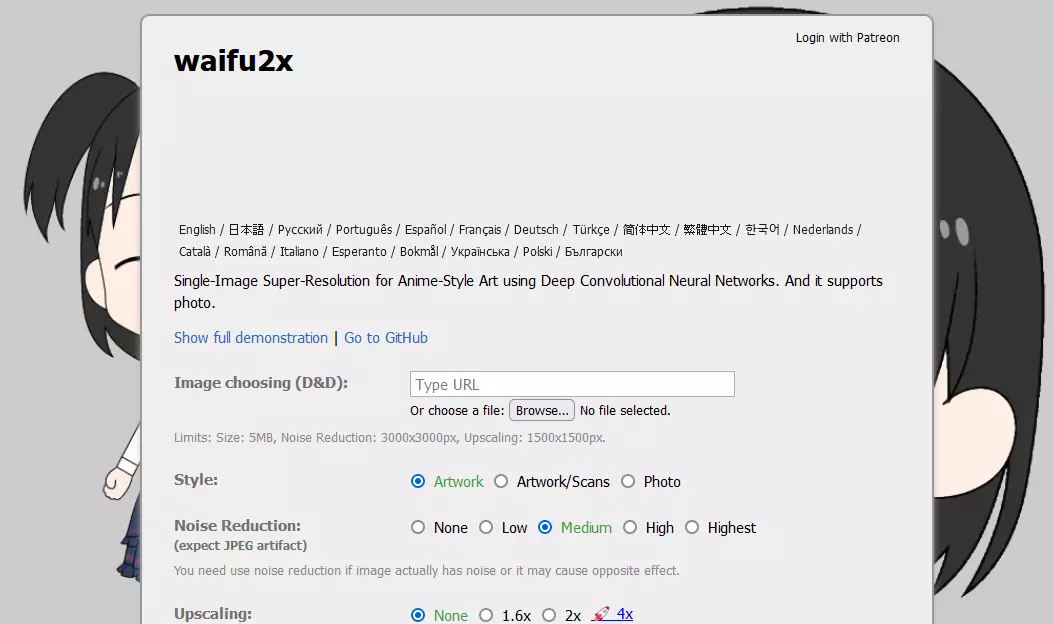
It was originally meant for anime. It quickly enhances any image through optimized open-source CPU models. Very fast processing speeds. Supports many formats through command line, GUI, and web interfaces.
Key Features:
- Very fast GPU processing speeds results
- Open-source models support research
- Command line, GUI, and online interfaces available
- Supports JPEGs, PNGs, WebP, and more formats
Pros: Completely free and open, customizable via code.
Cons: More basic interface, blurrier results for complex photos.
8. Letsenhance.io
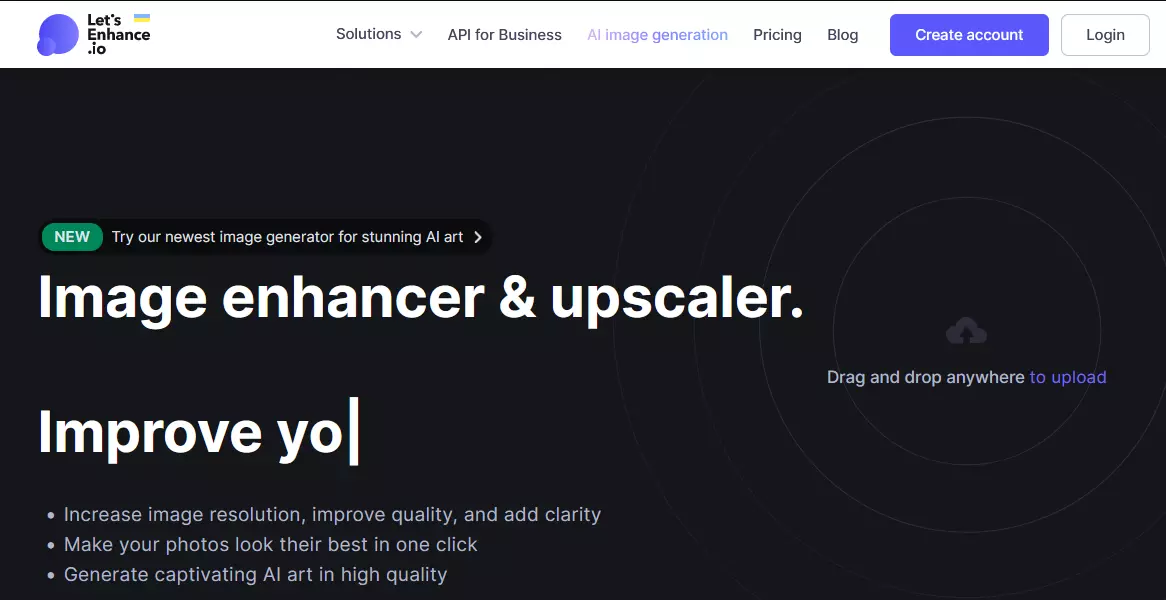
Letsenhance is a free online photo enhancer and upscaler that uses artificial intelligence to improve image quality and resolution with one click. It offers an intuitive drag-and-drop interface for simple uploads alongside presets and customization options for automatic enhancements. Through its automated AI-powered technology, Letsenhance streamlines image optimization for both personal and commercial use.
Key Features:
- Intuitive drag-and-drop uploader for easy single or batch uploads
- One-click automatic enhancements with customizable presets
- AI-powered technology optimizes photos in seconds
- Applicable to both personal and commercial image optimization needs
Pros: Removes the need for advanced photo editing skills while effectively optimizing image quality. scalable solution suitable for individual and business use.
Cons: Watermarked files for free users. The weekly upload limit may be too low for high-volume commercial optimization needs.
9. Real-ESRGAN:

It delivers top ESRGAN quality upscaling through easy websites with real-time previews. Leverages cutting-edge model. The site gives unlimited free usage. Some quality loss may occur at extreme scales beyond 4x.
Key Features:
- Leverages top-ranked ESRGAN architecture
- The web application requires no downloads
- Batch processes folders of images quickly
- Free unlimited usage is available
Pros: Outstanding results.
Cons: Some quality loss at extreme scales.
10. StockPhotos Upscaler
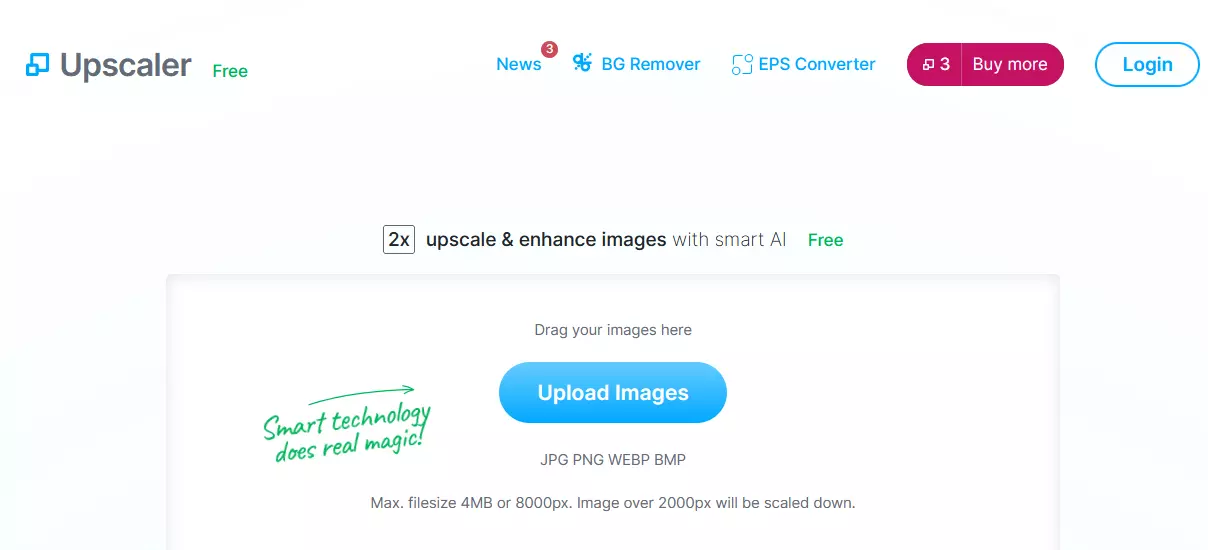
StockPhotos Upscaler Focuses on batch-processing commercial stock image libraries. It offers a robust uploader and high-resolution touch-ups. Cloud processing streamlines license-based photo enhancement for resale portfolios.
Key Features:
- Robust batch uploader and processing
- High-resolution touch-ups
- Speedy cloud-based workflows
- For commercial stock libraries
Pros: Streamlines enhancements for resale libraries.
Cons: More limited outside commercial stock usage.
11. Zyro AI Image Upscaler
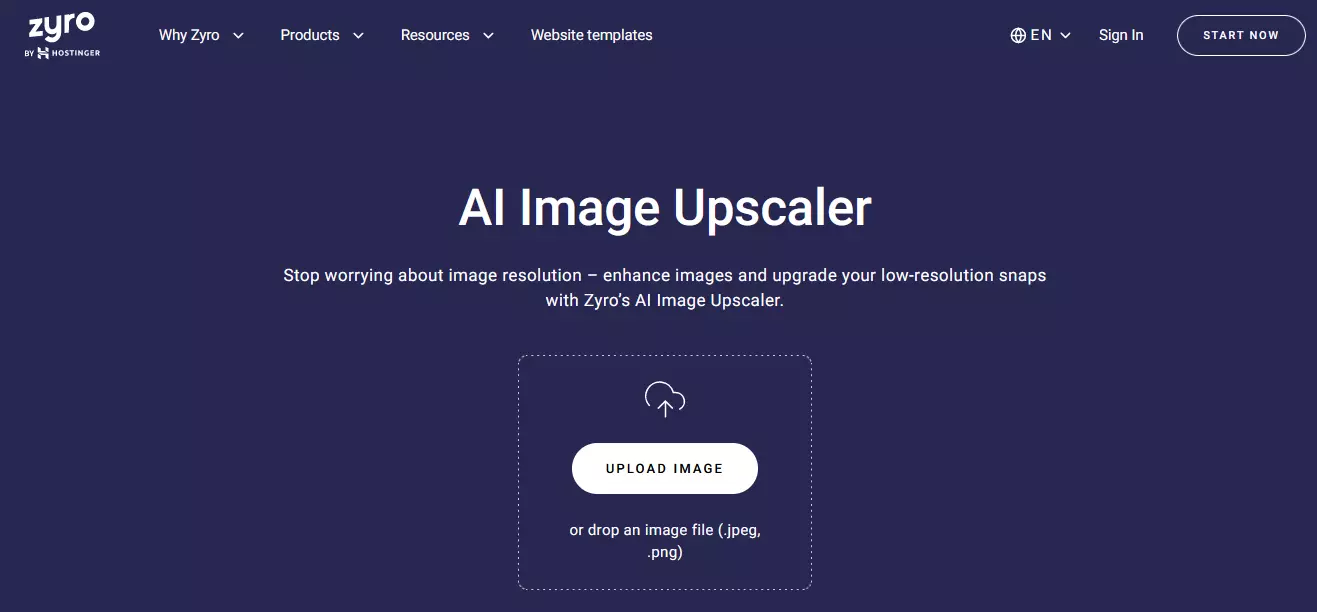
Zyro AI Image Upscaler optimizes presets and enhancements across devices via proprietary AI models. Automatic optimizations between interfaces. Provides easy solutions optimized for smartphones and tablets.
Key Features:
- On-device and cloud processing
- Quality upgrades across devices
- Automatic optimizations
- Intuitive interfaces
Pros: Smooth usage anywhere via the cloud.
Cons: Few customization options versus specialized software.
12. AVCLabs Photo Enhancer AI
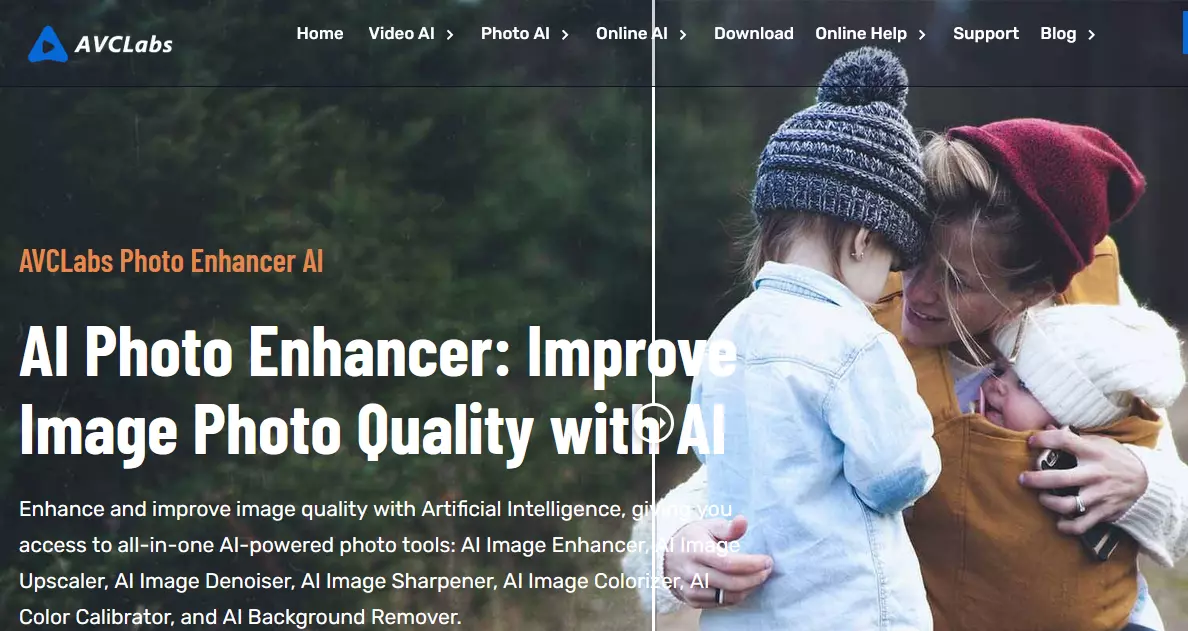
Aims to automate photo enhancements for complete beginners through minimal required involvement. Improves tones, colors, and details with a single click.
Key Features:
- Improves tones, colors, and details with a single click
- Automatic scene analysis is a handler
- For complete beginners interface
- Less customization than advanced tools
Pros: Perfect for complete beginners.
Cons: Less customization than advanced tools.
How Does AI Image Generation Work? A Beginner’s Guide
AI Image Upscaling Use Cases:
- AI upscaling has countless practical applications across industries:
- Rescuing old family photos and film to preserve memories
- Boosting low-res product shots for improved e-commerce visibility
- Remastering classic films and TV shows for Blu-Ray and streaming
- Enhancing surveillance footage for security, traffic, and medical research
- Improving scanned historical documents for archival digitization
- Augmenting maps, schematics, and technical/medical visuals
- Creating ultra-high definition digital paintings from source art
- Optimizing website and social media imagery for top visibility
- And emerging commercial domains in drone imaging, manufacturing, etc.
As models advance, these capabilities will become indispensable creative and productivity aids. Both individuals and organizations benefit.
Stable Diffusion Negative Prompts: A Comprehensive Guide with Practical Examples
How to Optimize Images for AI Upscalers:
While the algorithms learn images holistically, there are best practices to maximize quality results:
- Always start with the highest resolution source images when possible
- Shoot RAW formats in manual mode for greater editing control
- Denoise inputs beforehand using tools like Topaz DeNoise
- For photos, choose models trained specifically for realism over style
- Use lossless file formats like TIFF for quality preservation
- The batch processes many similar images together
- Scale images gradually in multiple smaller passes
- Adjust color, contrast, and sharpness post-processing as needed
- Attribute and restrict commercial/sensitive uses as required
The following optimization helps upscale work most effectively while retaining authentic image characters.
Cautions and Limitations of AI Image Upscaler:
Of course, current capabilities also have intrinsic technical constraints:
- Quality degrades with each additional resolution scale
- Fine details may blur or simplify, especially textures and edges
- Heavy JPEG artifacts can cause generative errors or artifacts
- Most tools aren’t designed for complex drawings or vector graphics
- Upscaling video remains far more challenging than static images
- Very large source files require powerful dedicated hardware
- Severely incomplete areas cannot be convincingly filled in
- Outputs should not be used for high-stakes tasks without verification
Understanding these realistic parameters is key to judicious application and managing expectations. With care, the pros far outweigh the cons.
Final Thoughts:
AI image upscaling opens new doors for preserving history, creativity, and memories in increasing resolutions. While not a cure-all, these tools greatly extend the lifespan of visual media when used prudently. As neural models advance, expect applications and quality to grow yet more remarkable. For both personal and professional use cases, AI upscaling provides a tremendous new digital capability.